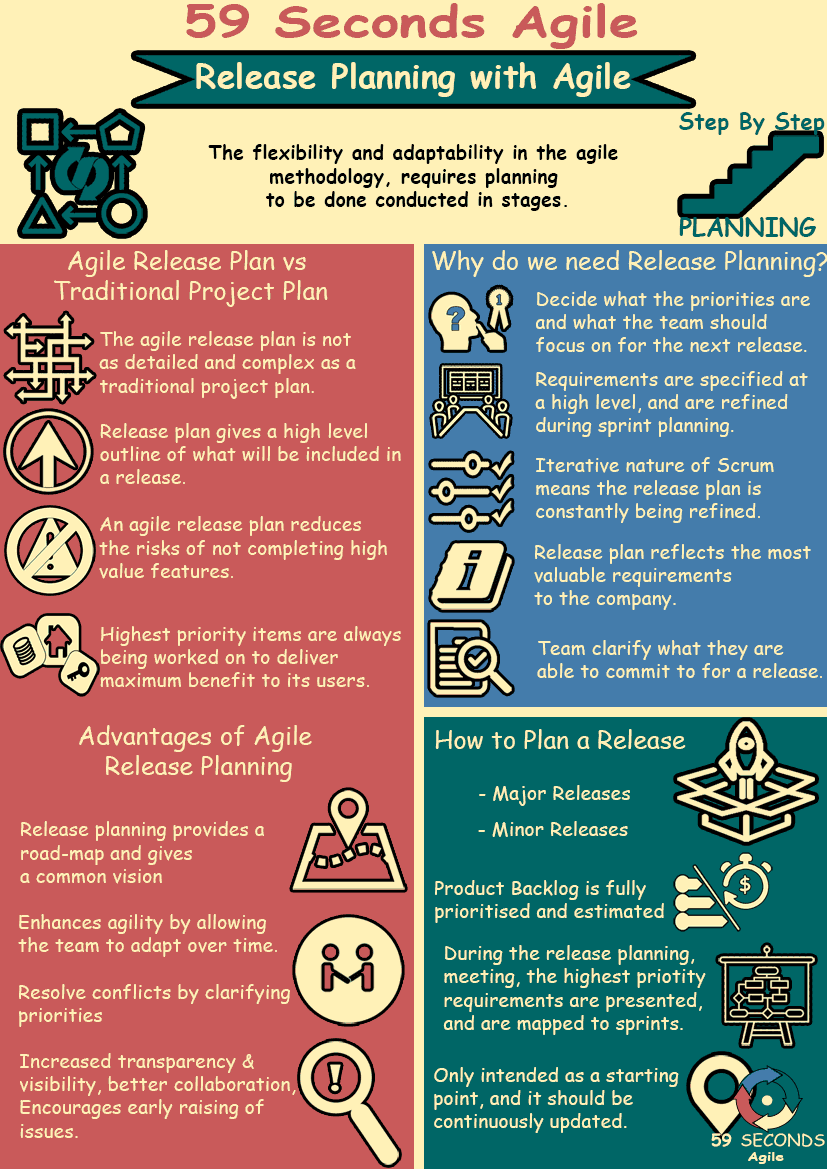
Release Planning For Product Owners
Agile projects depend on the development of a refined feature backlog to support the prioritization of features that have the greatest value to stakeholders and end users. Agile principles centre on delivering a minimally viable product (MVP) that aligns with the business vision of a product. The Product Owner is the leader in the development of a refined backlog, aligning the feature delivery to the stakeholder and focusing the team on results.
Release planning serves as a road-map for delivery and monitoring progress. Release planning is used to line up the delivery of features for the next three to twelve sprints. Inputs to the release planning process include:
Feature backlog
Dependencies and Risks
Planning Metrics and
Estimates of Scrum team velocity.
Releases can be planned by feature prioritization, driven by dates or a combination including milestones. The product owner has responsibility for establishing the goals of a release and the delivery date. It is important to remember that the team is focused on delivering the minimally viable product. The features included are only those that are needed to successfully deliver a usable product to the market.
The output of release planning will be a prioritized backlog with initial slotting of features into sprints. While each sprint must produce features that can be released to the market, releases may be aligned by the inclusion of multiple sprints.

Feature Driven Release Planning
The foundation of a product is identifying the right features to deliver to the market and the prioritization. The product owner is responsible for creating the backlog with input from key stakeholders and the scrum team. Key data points in the product backlog include:
A description of the feature
An estimate of value to be used in determining priority and
An estimate of time to deliver the high-level story associated with the feature
Feature driven release planning relies on the scope and prioritization of product deliverables. This requires a focus on feature-driven development (FDD). FDD focuses on client-centric deliverables. Releases will be scoped to deliver features that add value to the client and market. Features are fixed in the release and scope should not be expanded. Agile scrum allows for changes and the inspect and adapt model so changes to user stories or removal of features may be identified during the scrum development process. The product owner leads the effort in defining the feature-driven release by following these steps:
Our Favourite Agile Books
We found these books great for finding out more information on Agile Scrum:
1) Identify the prioritized list of features to be included in a release. It is important to assess value with input from key stakeholders.
2) Working with the scrum team, estimate the story points for each user story assigned to a feature.
3) Host additional discussions with the scrum team to identify any risks or dependencies to reduce technical debt. This may impact the prioritization and inclusion of features in a release.
4) Using past or estimated scrum team velocity, determine the number of user stories that can be assigned to each sprint.
5) Determine the number of sprints required to deliver all of the features identified for a release.
6) Establish the release date based on the number of sprints required.
7) Keep in mind that additional sprints may be required for regression testing and software deployment activities.

